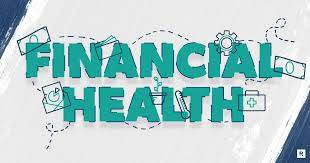How to Balance Saving for Retirement and Paying Off Debt
When it comes to personal finance, two of the biggest priorities many people face are paying down debt and saving for retirement. Both are essential for financial security, yet it’s challenging to decide where to focus when resources are limited. Here’s a guide on how to balance these two goals and build a secure financial future.
1. Assess Your Financial Situation
Before deciding how to allocate money between debt repayment and retirement savings, it’s essential to understand your current financial position:
Debt Details: List your debts, including balances, interest rates, and monthly payments.
Retirement Goals: Think about when you’d like to retire and how much you may need in retirement. Use retirement calculators to estimate your needs.
Income and Expenses: Know how much income you have after covering living expenses, as this will be the pool you’ll use to fund both goals.
Tip: Understanding where you stand financially helps prioritize your debt and retirement goals effectively.
2. Pay Down High-Interest Debt First
Debt with high-interest rates, like credit cards, can grow rapidly, making it difficult to pay off over time. The high interest on such debt often outweighs the potential returns from retirement investments, so it’s wise to focus on paying down these debts first.
Example: If you have credit card debt with a 20% interest rate, paying it off quickly will save you more than you’re likely to earn from investments.
Strategy: Allocate extra funds to pay off high-interest debt aggressively, while making minimum payments on other debts.
3. Contribute Enough to Get Employer Matching
If your employer offers a 401(k) match, prioritize contributing enough to qualify for the full match. This “free money†is essentially a guaranteed return on your investment and boosts your retirement savings without much additional cost to you.
Example: If your employer matches 3% of your salary and you contribute 3%, you’re getting a 100% return on that contribution.
Key Benefit: Taking advantage of the employer match helps you grow your retirement fund even while paying down debt.
4. Evaluate Interest Rates vs. Investment Returns
When choosing between paying off debt or investing for retirement, it’s helpful to compare the interest rate on your debt to the expected rate of return on your retirement investments.
Higher Interest Rate: If your debt interest rate is higher than the expected investment return, prioritize debt repayment.
Lower Interest Rate: If your debt interest rate is lower than what you’d expect from investments, it may make sense to focus on retirement savings.
Tip: Typical stock market returns average around 7% after inflation, so debt with an interest rate below that may allow you to focus on retirement without financial loss.
5. Set a Balanced Budget for Both Goals
To effectively tackle both goals, allocate a portion of your budget to each. Some financial advisors recommend the “50-50 approach,†where half of available funds go toward debt repayment and half toward retirement savings. Adjust this ratio based on your debt, retirement timeline, and financial goals.
Example: If you have $300 a month to put toward these goals, you might dedicate $150 to debt and $150 to retirement.
Key Tip: A balanced budget helps you make progress on both fronts without sacrificing one entirely.
6. Automate Your Savings and Payments
One of the easiest ways to stick to your plan is to automate your debt payments and retirement contributions. Set up automatic payments on debts to avoid missed deadlines, and automate transfers to your retirement accounts, even if it’s a small amount. This makes it easier to maintain consistency and avoid the temptation to spend elsewhere.
Tip: Even small, consistent contributions compound over time, building both savings and momentum toward debt-free status.
7. Review and Adjust Regularly
Your financial situation will likely change over time due to income changes, interest rate fluctuations, or personal milestones. Review your progress at least annually and make adjustments if necessary.
Debt Decline: As debt decreases, you may be able to shift more funds toward retirement.
Life Changes: Marriage, buying a home, or having children can all impact your priorities. Reassess how these affect your debt and retirement goals.
8. Build an Emergency Fund
It’s tempting to ignore emergency savings when focusing on debt and retirement, but an emergency fund prevents you from relying on high-interest debt if unexpected expenses arise. Aim for at least 3-6 months of living expenses, even if that means contributing a smaller amount to retirement or debt repayment each month.
Example: Setting aside $50 each month can grow into a small buffer that offers peace of mind and prevents derailing your financial plan.


